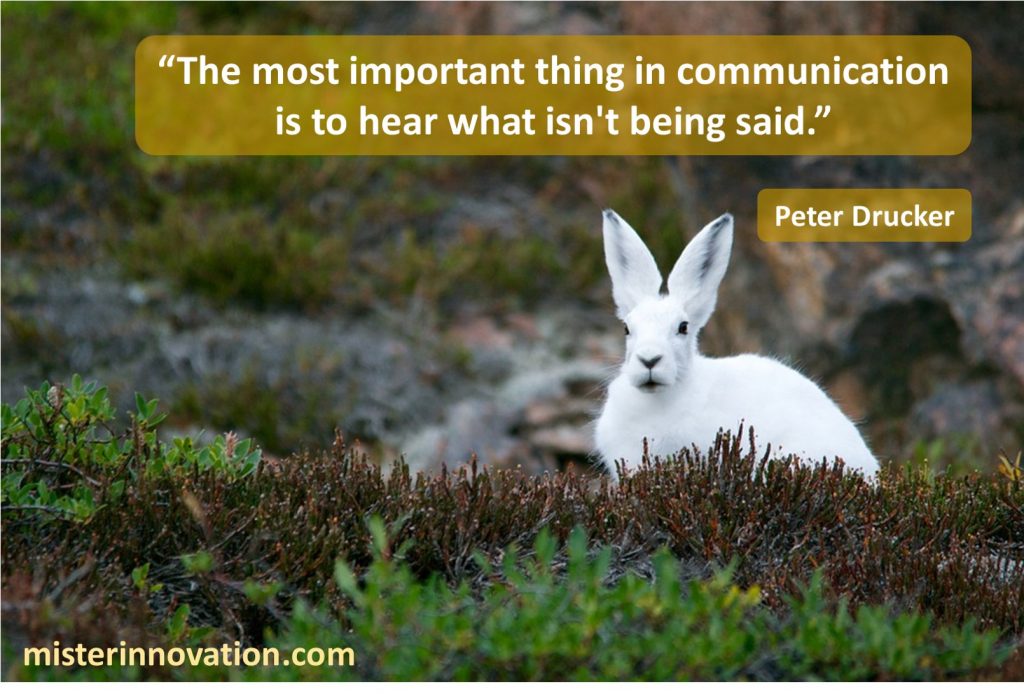
GUEST POST from David Burkus
Communication is what makes a team a team. Otherwise, it’s just a group of individuals working away at their desks, handing work up to some unnamed boss. In reality, people don’t work in a vacuum. And much of one individual’s work requires coordinating with one or more teams. Effective team communication makes individuals and teams dramatically more productive.
But unfortunately, a majority of employees say poor communication is the reason they’re falling behind and missing deadlines. That means, as a leader, one of your primary responsibilities is helping the team communicate and collaborate effectively.
In this article, we’ll outline four keys to effective team communication.
1. Match the Tool to the Goal
The first key to effective team communication is to match the tool to the goal. There are so many different collaboration tools available to teams today. From “old school” methods like in-person meetings, memos, and email to modern methods like video conferencing, Slack, and maybe even the metaverse. But every tool chosen comes with certain strengths and certain weaknesses. And as a result, different tools are more appropriate for different tasks. For instance, if the goal of the communication is to generate ideas, then face-to-face meetings are likely still the best method. But if you’re just presenting information to the team, video conference should suffice—or even better, just record yourself talking over the slide deck, send it out as a video, and save everyone from one more meeting.
Smart leaders consider the goal of the communication they are asking their team to engage in, and then select the appropriate medium of communication accordingly. More importantly, they don’t just choose the medium they prefer—but they consider the entire team and chose what is best for everyone.
2. Amplify Unheard Voices
The second key to effective team communication is to amplify unheard voices. On any team, there are certain voices that are louder and more frequent, and others that go unheard. Sometimes this is because of existing gender, racial, or ethnic biases that leave certain voices unnoticed or quickly dismissed. But often even the medium of communication chosen favors some team members and leaves others less likely to contribute. The setting of in-person meetings can favor loud, extroverted participants and signal introverted, more contemplative participants to contribute less often. The technology required for video conferences often favors more tech-savvy participants than those with great ideas who can’t figure out how to get off mute fast enough to share them. Even email communication can favor those with better written communication skills or those who utilize long-form writing as a tool for thinking.
Smart leaders understand their team and know who is favored or un-favored by the chosen tool for communication. Armed with that knowledge, they make a plan to pay attention to the oft-unheard voices and amplify those comments to ensure that everyone’s voice is heard, and everyone’s opinion considered.
3. Create A Safe Environment
The third key to effective team communication is to create a safe environment. This doesn’t mean a “safe space” where team members will never encounter an idea they disagree with. Rather it refers to a team environment of psychological safety, where team members feel safe to express their disagreements, and also their “crazy” ideas, suggestions, and perspectives. Psychologically safe teams are marked by a mutual sense of trust and respect—and those are two different qualities. When team members trust each other, they express themselves fully. But only if they feel their expression is respected by the team will they continue to trust them.
Smart leaders build trust by signaling their own vulnerability and admit when they don’t know the answer (which not only shows their trusting the team but also gives the team a chance to express different ideas). They also build respect by modeling active listening when others are sharing and showing a willingness to consider all ideas—not just defend their own.
4. Don’t Be Always On
The fourth key to effective team communication is to avoid being in constant communication—don’t be always on. While it may seem like high-performing teams are constantly communicating, it turns out many are marked by long periods without any real-time messaging. They definitely communicate—but they do it in quick bursts where everyone shares updates, problems, and the team solves in problems or roadblocks mentioned. Then they go their separate ways and trust each other to performing independently—which also allows each person enough time to focus and do the deep work that “always on” environments prevent.
Smart leaders teach their team to communicate in bursts, running meetings efficiently and infrequently. But some leaders inherit teams already in constant communication, so rather than flipping immediately to bursty communication they develop “no meeting Mondays” or certain small periods of time for team members to block out communication and focus—then gradually expand that time until the team is communicating less but better.
When you take these four together, and communicate in bursts in a safe environment, amplifying unheard voices and using the appropriate tools, you’ll find that your team’s communication improves. You’ll find the quality of their work improves. And you might just feel like your team is doing its best work ever.
Image credit: Pexels
Originally published at https://davidburkus.com on March 13, 2023.
![]() Sign up here to get Human-Centered Change & Innovation Weekly delivered to your inbox every week.
Sign up here to get Human-Centered Change & Innovation Weekly delivered to your inbox every week.








 Social media serves an incredibly important role in innovation. Social media functions as the glue to stick together incomplete knowledge, incomplete ideas, incomplete teams, and incomplete skillsets. Social media is not some mysterious magic box. Ultimately it is a tool that serves to connect people and information.
Social media serves an incredibly important role in innovation. Social media functions as the glue to stick together incomplete knowledge, incomplete ideas, incomplete teams, and incomplete skillsets. Social media is not some mysterious magic box. Ultimately it is a tool that serves to connect people and information.
